Stunning Teacher CV Examples for You to Use This Year
Working with students is a dream for many people. If you want to land your dream teaching job, your CV will need to wow recruiters. These writing tips will help!
Working with students is a dream for many people. If you want to land your dream teaching job, your CV will need to wow recruiters. These writing tips will help!
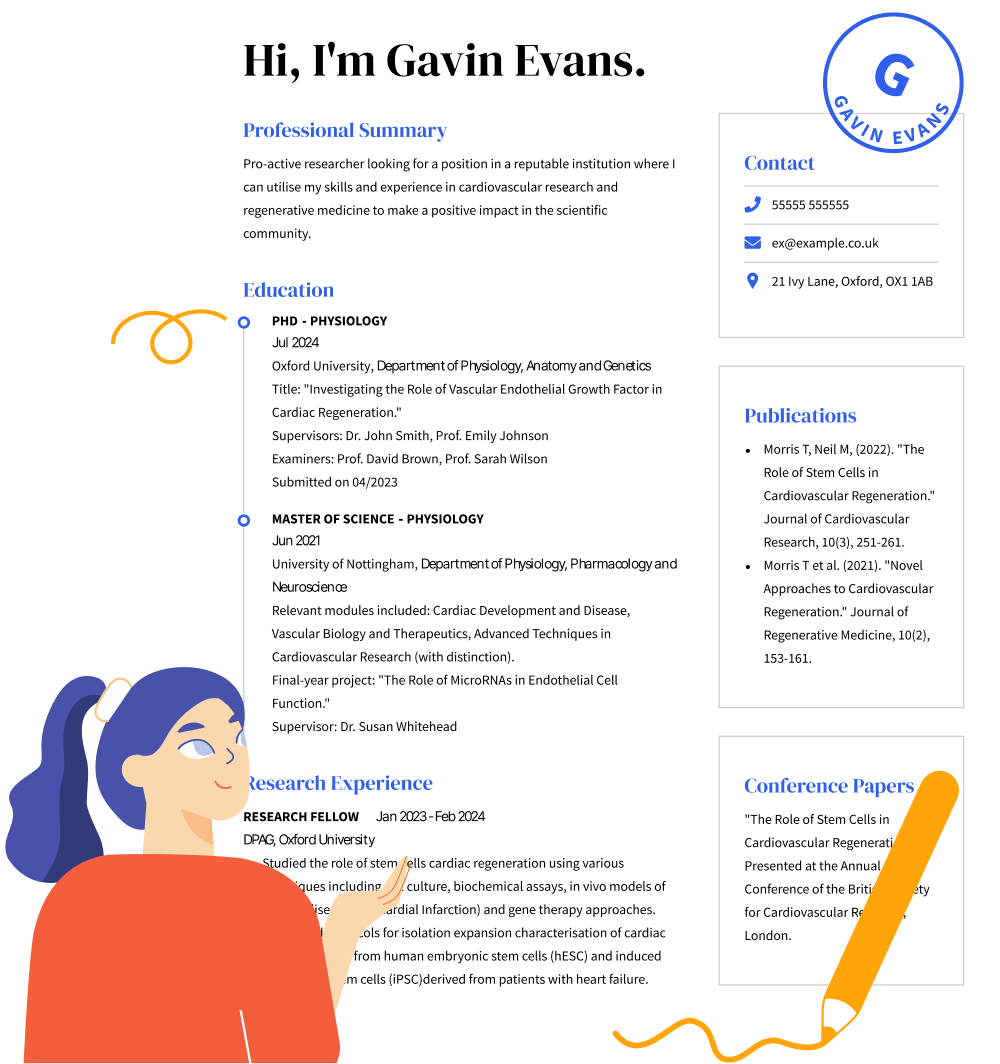
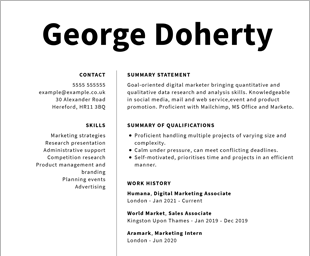
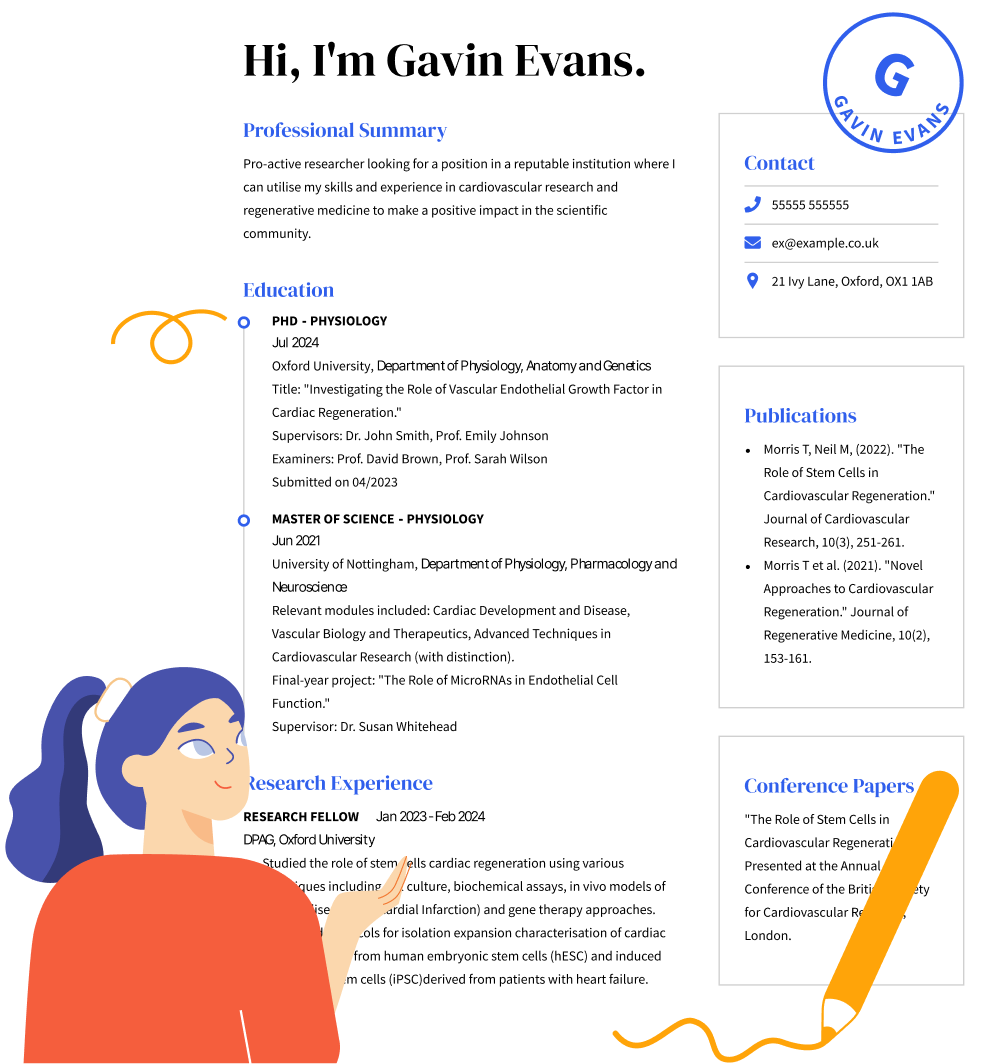
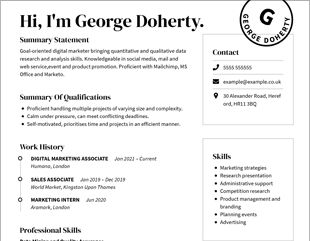
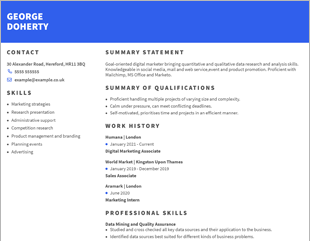
OUR USERS HAVE BEEN HIRED BY
Teaching is a rewarding career choice that offers the option to work in any one of the four nations that make up the UK. Of course, if you want to work in the best schools with an Ofsted rating of 1 or 2, you will need a professional CV that showcases your qualifications, teacher skills, and experience in the best possible way.
Any CV template that you will create on your own or via an online CV builder should have these sections. If you are applying for more senior roles, you may need to add extra sections for awards, advanced certifications, and professional publications. If you are a recent graduate, however, this basic CV format should be perfect for your next job application:
At the very top of your CV, you should have a header section that includes your full name, phone number and professional social media links, like your LinkedIn profile.
Directly below the header, you should provide a CV summary. This is a personal statement of sorts that sums up your key achievements, skills and qualifications. This is a snapshot of what makes you best for the role you have applied for.
Your CV skills section should contain 8 to 12 bullet points detailing the hard and soft skills that are most relevant to the job you are applying for. Here are some examples of teaching skills commonly listed:
Your work experience section should contain up to 10 years of work history, presented in reverse-chronological order, with the most recent or current position first. Each job description should include the job title, employment dates and a brief description of what your main achievements and duties were in this role. You can also include volunteer work or internship positions in your work history section. This can be especially helpful if you lack professional work experience.
Whether you want to be a primary school teacher or a teaching assistant, your education section will be important. As long as you have the required education degree or have completed a postgraduate PGDE course, however, you will have a chance of landing a job. Your education section should include only the most advanced and relevant academic qualifications that you have, as well as any specialized coursework or certifications.
If you want to make a really strong impression on hiring managers, there are some basic tips you should follow when discussing your teaching experience and skills:
If you work with students in a non-professional or volunteer capacity (e.g. as a sports coach, or working with children through a charity) you should include this work in your CV or cover letter. This kind of information will help to distinguish your job application from others on a recruiter’s desk.
When you discuss your achievements and work, use specific metrics, such as percentages. For example, rather than stating that the “majority” of your classes passed at high levels, state that over X% achieved a B or above grade (for Scottish Nat 5’s), or a 6 or above (for English GCSEs).
Proofreading thoroughly is the single best way to ensure that your CV doesn’t get discarded for a silly reason. Typos and grammatical errors will look particularly bad on a teaching CV.
Passive language such as “I was responsible for” and “I was tasked with” gives the impression that you are hands-off about your professional performance. Instead, use action verbs like “developed” or “created” to show that you take ownership of your performance.
Research from FinancesOnline shows that 35% of hiring managers reject applications that provide an unprofessional email address. Use or create a simple, professional email address that features just your name. For example, JohnSmith91@gmail.com or something similar.
Teaching is a fairly traditional field of employment, so keep your CV simple and minimalist in design to ensure that it is easy to scan.
Yes. If you want to make the most of your teacher CV and increase your chance of a successful job application, you should include a cover letter. Your teacher cover letter presents a unique opportunity to connect with hiring managers and provide extra information to support your application. Consider cover letter examples for inspiration.
If you have recently finished your degree and are preparing to apply for jobs after your probationary placement, it is important to remember that placements and any work experience completed as a part of your degree can be included in your CV. While you may be competing with teachers who have more years of experience, you can still land a great job if you pay attention to the requirements of the job posting and prove that you have matching skills and qualifications.
When you want to use your curriculum vitae from your last teaching role to get a new job, you should first ensure all of your contact information is correct and update your work history section. Once you have done this, read the job description thoroughly and highlight the skills, qualifications, and experience listed as necessary in your resume wherever they match your qualifications. These are essential keywords that will help your CV pass through applicant tracking systems (ATS) that employers use to scan resume submissions. If you are changing fields entirely, focus on transferable soft and hard skills as well as highlighting any professional certifications you have.
We personalize your experience.
We use cookies in our website to ensure we give you the best experience, get to know our users and deliver better marketing. For this purpose, we may share the information collected with third parties. By clicking “Allow cookies” you give us your consent to use all cookies. If you prefer to manage your cookies click on the “Manage cookies” link below.